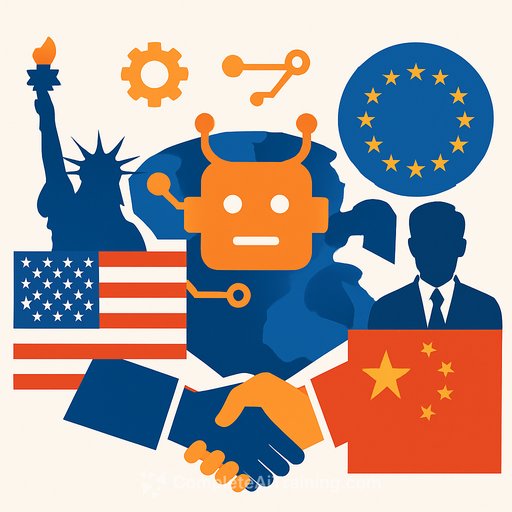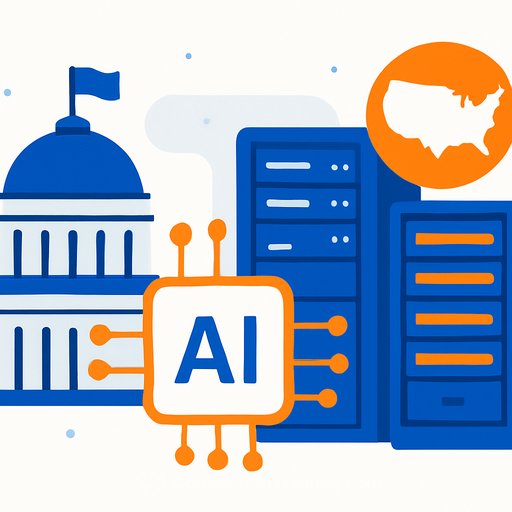The New AI Action Plan: America First for Artificial Intelligence
The latest AI Action Plan emphasizes an “America First” approach for artificial intelligence. It prioritizes cutting environmental regulations, speeding up data center approvals, and boosting AI exports. This innovation-driven US strategy stands in clear contrast to Europe’s more cautious, risk-focused stance.
Yet, the plan is not about going it alone. It directs the State and Commerce departments to collaborate internationally, pushing for shared standards and governance through organizations like the United Nations, OECD, G7, G20, and the International Telecommunication Union. Europe has expressed approval of this global approach.
A Transatlantic Tech Truce?
Signs point to a possible tech truce between the US and Europe. The recent trade deal left out contentious issues like digital taxes and digital regulation. It also spared semiconductors from tariffs and promised to drop demands for network fees from platforms streaming videos.
This marks a significant shift from previous months when the US criticized European digital taxes targeting American tech firms and called Europe’s Digital Services Act “censorship.” Europe’s focus on AI safety and regulation was a particular target.
“The AI future is not going to be won by handwringing about safety,” said Vice President JD Vance at the Paris AI Action Summit. “It will be won by building — from reliable power plants to manufacturing facilities producing the chips of the future.”
European Ideas in the US AI Plan
Despite the contrast, the new US plan incorporates some European-inspired ideas. It encourages rapid AI adoption in the public sector, mirroring the European Union’s AI Continent Action Plan. It also supports “regulatory sandboxes” that allow AI testing without fear of liability, a concept already active in Europe.
Both the US and EU share goals to build AI infrastructure and ease local planning rules for data centers. The removal of Biden-era export controls on AI chips now makes these vital components accessible to all EU countries, aiding their AI development efforts.
The White House’s backing of “open source” and “open weight” AI aligns with European Commission guidelines on data disclosure, specifying when companies must report data used for training large AI models.
Diverging Perspectives
Still, many aspects of the US plan won’t resonate well in Europe. Aggressive deregulation faces skepticism in European capitals where public concern over tech risks remains high. US restrictions on “woke” left-wing content also lack European support.
US tech firms appreciate the innovation-first focus and contrast it with what they view as Europe's heavy-handed regulation. Joel Kaplan, Meta’s head of government affairs, criticized the EU’s approach as “inconsistent, restrictive & self-defeating,” highlighting ongoing regulatory frustrations despite Europe’s importance as a market.
The Challenge of China
China’s development of the low-cost, high-performing DeepSeek AI model remains a key concern in Washington. The US plan calls for AI “dominance” as a direct challenge to Beijing’s ambitions.
However, the US needs Europe’s partnership to counterbalance China effectively. Europe is the US’s largest trading partner and controls critical parts of the AI supply chain, including the lithography machines essential for AI chip production.
While the US government may reject European-style AI regulations, practical collaboration could emerge by setting aside divisive rhetoric.
For those interested in broadening their AI knowledge or skills in this evolving environment, exploring available AI courses and resources can provide valuable insights into both policy and technology trends.
Your membership also unlocks:





